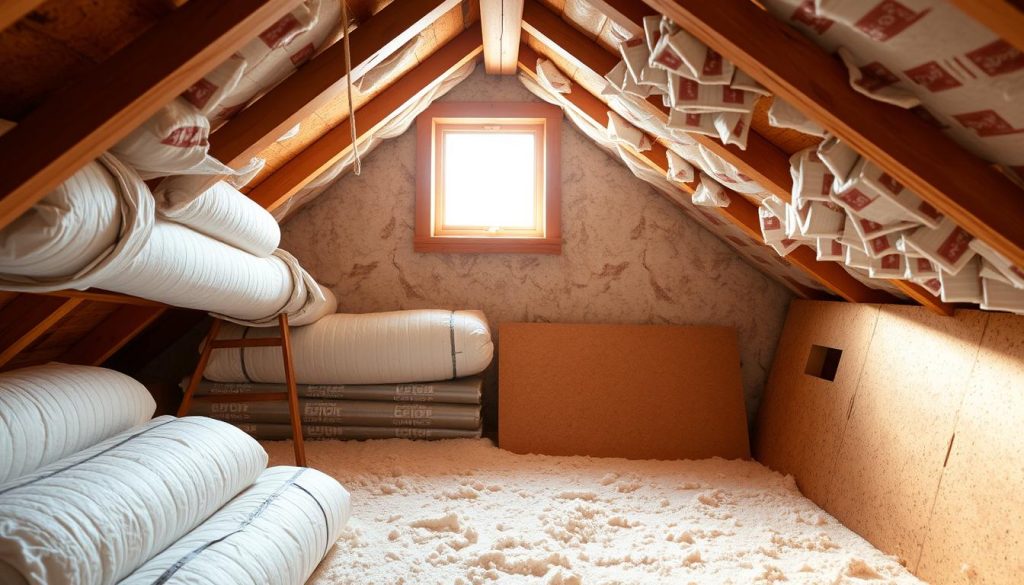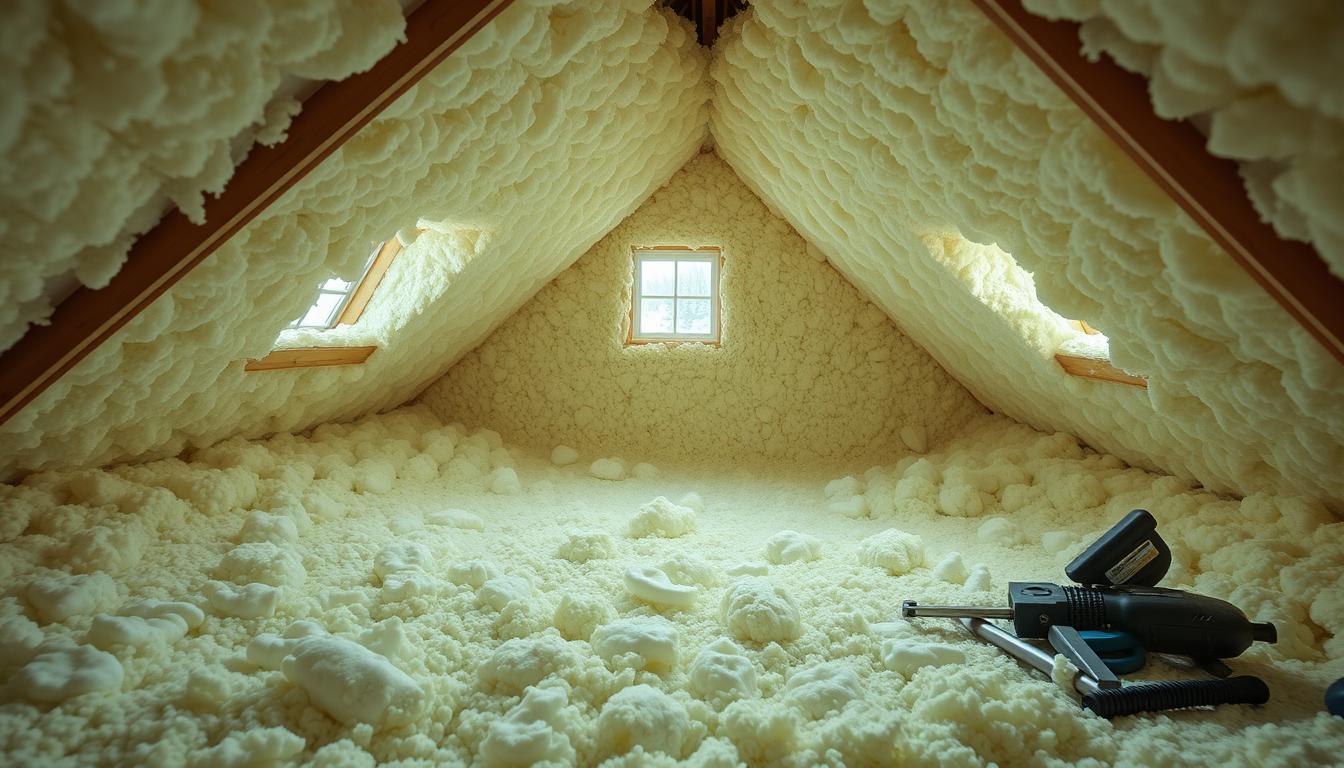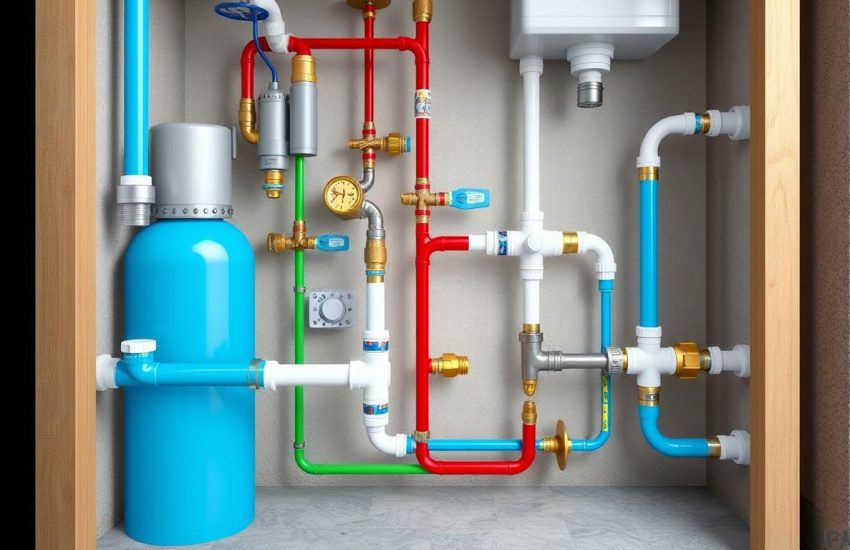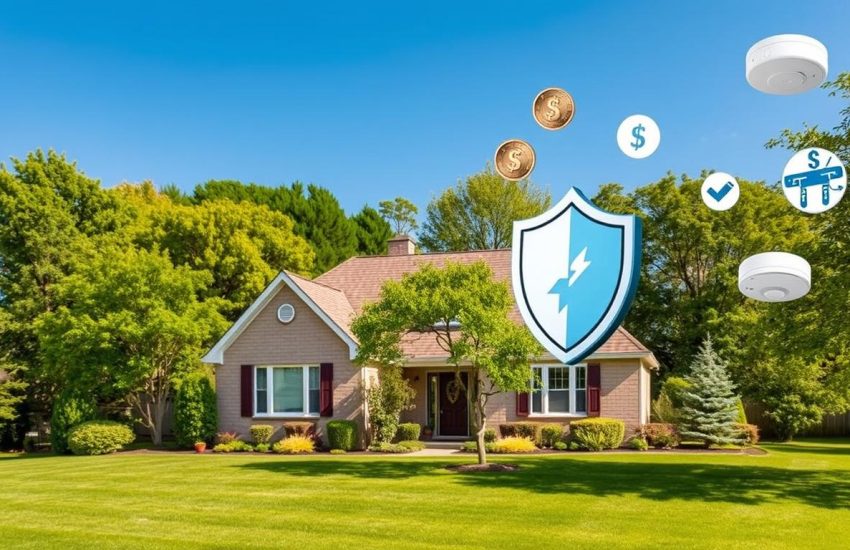Attic Insulation: A Complete Guide for Homeowners
Have you ever thought about how much money might literally be slipping through the cracks in your attic? With 90% of US homes estimated to be under-insulated, chances are your attic could be the unseen flaw undermining your home’s energy savings, comfort, and value. Attic insulation is not a glamorous home improvement project, but it might just be the most cost-effective one you’ll ever make.
Attic insulation creates an essential thermal boundary, fiercely protecting your home from the relentless seasons that seem eager to infiltrate your space. In frigid winters or scorching summers, the right insulation keeps your living space snug and irons out those pesky home climate issues—all while providing the much-touted energy savings and a welcomed hike in your home value. Even better, you’re not alone on this journey; we’ll dive into why chasing the proper R-value for your regional climate, exploring the insulating champions like fiberglass, cellulose, and spray foam, and discerning when to call in the pros becomes a storyline worth following.
And what of the space you claim as your own beneath your roof? If you’re battling uneven room temperatures, higher than normal energy bills, or waging a winter war against ice dams, it’s a telltale sign your attic insulation demands a closer look. Insulation degrades, after all, and even the mightiest materials bow to time and the elements. Ventilation, too, plays its part—a poorly ventilated attic is a paradise for moisture and mold, not to mention a grave for your HVAC system’s efficiency.
Home improvement isn’t just about aesthetic appeal; it’s about making tangible changes that fortify your quality of life. Fortunately, ample solutions are at hand—a myriad of materials and methodologies ready to arm your home against the odds. So let’s embark on this attic transformation journey together and unveil the secrets to turning a neglected nook into the cornerstone of home comfort and energy efficiency.
Key Takeaways
- Insufficient attic insulation can lead to heat loss, increased energy bills, and discomfort within the home.
- Understanding the recommended R-value for your area based on climate and home age is crucial for effective attic insulation.
- Regular attic inspections can prevent expensive repairs and maintain a well-insulated, energy-efficient home.
- Different materials offer varying degrees of thermal resistance, suited to diverse needs and climates.
- Professional evaluation is often necessary to determine the best type of insulation for your attic and resolve ventilation and air sealing issues.
- A properly insulated attic can significantly increase a home’s value and contribute to a smaller carbon footprint.
- Energy savings and comfort are directly tied to the quality and maintenance of attic insulation.
Why Focus on Attic Insulation?
Attic insulation is key for better home upgrades and energy efficiency. Most homes don’t have enough insulation. This means you can save money on attic insulation. You’ll see lower energy bills and feel more comfortable.
Right attic insulation cuts energy costs a lot. It keeps temperature steady. This eases stress on your HVAC system. You could save up to 45% on energy. The R-value significance tells how well insulation blocks heat. It’s important for keeping your home energy-efficient.
- It makes your home’s energy use better. You get steady temps all year.
- It brings down energy costs. Good attic insulation keeps heat right in summer and winter.
- Insulation boosts home upgrades. So, your home’s resale value goes up.
When thinking about upgrades, R-value significance matters a lot. Go for an R-value that’s high enough, like R-49. That’s about 18 inches of blown insulation.
| Insulation Type | Cost per Square Foot | Typical R-Value | Notes |
|---|---|---|---|
| Blown-in Fiberglass | $0.50 to $2 | R-2.2 to R-2.7 per inch | It’s a popular choice and great for adding more insulation. |
| Cellulose | $0.60 to $2.30 | R-3.2 to R-3.8 per inch | It’s eco-friendly and seals air leaks well. |
| Spray Foam | $0.50 to $7 | R-6 to R-7 per inch | Very effective but costly, best for new installs. |
| Mineral Wool | $1.40 to $2.50 | R-3.0 to R-3.3 per inch | It’s fire safe and reduces noise really well. |
Picking the right insulation means looking at cost, how well it works, and if it suits your home. Options like blown cellulose or spray foam offer different advantages, especially for home upgrades.
DIY vs Professional Help
Choosing between DIY attic insulation and professional insulation upgrade needs looking at costs, safety, and benefits. The idea of saving money with a DIY project can be tempting. Yet, we must think about the complex issues and possible negatives.
DIY insulation often leads to mistakes in handling and installing. This can cause moisture issues and less effectiveness. Gaps from improper installation can increase heat loss and energy bills. On the other hand, professional help means expert installation. They know how to use different materials and fix tricky spots.
This table shows key differences between DIY and professional attic insulation. It looks at safety risks, how long things take, and how good the work is.
| Aspect | DIY Insulation | Professional Insulation |
|---|---|---|
| Cost-Effectiveness | Lower initial cost, potential higher long-term expenses due to errors | Higher initial cost, lower energy bills, and reduced maintenance costs |
| Safety Risks | High – exposure to irritants and inadequate installation | Low – professionals are trained in safe handling and installation |
| Quality and Durability | Variable, dependent on individual skill | High – adherence to building codes and manufacturer guidelines |
| Time Efficiency | Varies, often extended due to lack of experience | Quick and efficient, minimizing disruption |
Looking at the cost-effectiveness of DIY insulation versus a pro is vital. Think about how each choice affects future maintenance and energy costs. A pro upgrade costs more at first but can protect against moisture and save on energy bills later.
In the end, choosing DIY or professional insulation needs careful thought. Consider not just the costs now but also the value and safety for your family later.
How to Save Money
Looking into affordable attic insulation is both cheap and smart. It helps save a lot and increases your home’s value. Many people don’t know how much they can save with the right attic insulation. By choosing high R-value materials, you save money and make your home more efficient.
In the U.S., about 90% of homes don’t have enough insulation. This makes utility bills high and HVAC systems work too hard. Insulating isn’t just about saving money. It’s also about making your energy go further to keep your home comfy.

Good attic insulation saves more than just money for one house. It also helps save energy overall. Let’s look at how picking the right R-values and installing the right insulation can save a lot.
| Description | Savings | Yearly Impact |
|---|---|---|
| Average reduction in energy bill | 10-15% | $200 |
| Heating & Cooling Cost Reduction | 15% | $207 |
| Typical Home Savings Yearly | 15% | $207 |
Some might worry about the cost of adding insulation. Yet, better attic insulation can save about 15% on heating and cooling each year. This leads to big savings over time.
By doing some research, you can save more on these projects. Check out different insulation types and installing techniques at Maximizing your savings. Each kind, like fiberglass or spray foam, has its perks. These include how long they last, how well they work, and how much they cost. Remember, their R-value shows how good they are at stopping heat from passing through.
So, investing in great, high-R-value attic insulation cuts down your energy bills a lot. It also makes your home worth more. Over time, the savings on energy use will cover the cost of installation.
Step-by-Step Upgrades
Upgrading attic insulation is key for homeowners wanting to better their home’s energy use and comfort. It starts by checking the current insulation. This tells us its condition and how well it keeps in heat. Here’s how to make your attic insulation better.
Sealing air leaks is very important. Leaks can hurt your home’s energy saving. Use caulk and foam to seal up gaps around attic hatches and lights. This stops unwanted air from coming in or out. It makes your insulation work better.
Then, add more insulation if needed. Use loose-fill insulation for odd-shaped attic areas. It reaches into small spaces well. For neat attic areas, use fiberglass batt insulation. It’s easy to put in and stops heat from escaping. Make sure not to squish the insulation. This helps it work best.
Keep insulation away from lights to avoid fire risks. Leave at least 3 to 4 inches clear. Also, put in baffles to keep the air moving right. Good air flow stops moisture and keeps your roof and insulation in good shape.
The table below shows different insulation types and how well they keep in heat. It helps you choose what’s best for your attic:
| Type of Insulation | Material | R-Value per Inch | Recommended Use |
|---|---|---|---|
| Fiberglass Batt | Fiberglass | R-3 to R-4 | Structured spaces, easy installation between joists |
| Loose-Fill | Cellulose | R-3.5 to R-3.8 | Irregular attic spaces, great for top-up insulation |
| Loose-Fill | Fiberglass | R-2.5 | Irregular and hard-to-reach spaces |
| Spray Foam | Polyurethane | R-6 to R-7.1 | Sealing air leaks, small gaps, high insulation value areas |
Pick the insulation that fits your area’s climate. Use Energy Star’s recommendations to decide. Always be safe. Wear gloves and masks. Make sure the area is well-ventilated. Hiring a pro can make the upgrade simpler and safer. They know how to do it right.

Final Tips for Success
As we wrap up this guide, remember key steps for a successful attic insulation project. Do not forget about proper ventilation. Without it, moisture can damage your insulated attic. Make sure your plan includes good airflow to prevent moisture problems.
Choosing the right insulation material is crucial. Think about your area’s climate and your home’s needs. For cold areas, a high R-value is key. Spray foam, with an R-value up to 6.5 per inch, is recommended. On a budget? Fiberglass is cheaper yet effective, with an R-value of 3.2 per inch.
Follow the Department of Energy’s R-value guidelines. They mark the efficiency level for your area. Also, avoid mistakes like squishing insulation materials. It lowers their R-value.
Getting help from insulation professionals is smart. They know how to save energy and follow safety rules. They’ll find the best insulation type and amount for your attic. Look into local rebates and tax credits to help with costs. Costs can vary from $1 to $7 per square foot, depending on the material.
Investing in good insulation boosts your home’s energy use. It can cut heating and cooling bills by up to 20%. This saves you money over time.



